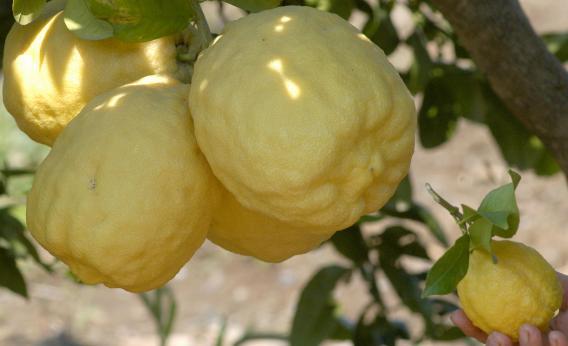It’s a banner week for food protests in Germany: First meat lovers deployed sausage double entendres to fight flexitarian creep; now students are standing up for the rights of ugly fruits and vegetables. Three visual communications students have launched a crusade to convince consumers to stop snubbing malformed, unphotogenic produce specimens. “They would like to see the creation what they call ‘Ugly Fruits’ supermarkets—stores that would focus exclusively on selling produce rejected by other chains,” reports Der Spiegel with an admirable lack of snark. Or, as one Awl commenter put it with slightly more snark, “It’s the Dove Real Beauty campaign for produce.”
There is a slideshow of ugly fruits and vegetables accompanying the Der Spiegel article, and it is not recommended for anyone with a weak stomach: The tentacle-sprouting lemon, conjoined-triplet cucumbers, and fertility-doll-shaped strawberry cluster are likely to give you the heebie-jeebies. There is a reason consumers prefer not to buy misshapen produce, and it is that they offend our aesthetic sensibilities. Luckily, our food system already has a very good solution to the non-problem of ugly fruits: They’re sold to processors, who turn them into baby carrots, jam, lemonade, frozen dinners, and other value-added products.
It’s win-win: Food isn’t thrown away, and shoppers aren’t forced to look at horrifying, appetite-killing botanical monsters. Could grocery stores stand to relax their aesthetic standards for produce a little bit? Sure, probably. But that doesn’t mean they should start selling grotesqueries like the ones highlighted in the German campaign.
Unlike the women featured in Dove’s Real Beauty campaign, fruits and vegetables do not have thoughts or feelings, and therefore there is no good reason to oppose their cultural marginalization. So what accounts for the German students’ passion for the rights of hideous zucchini? I blame foodie culture’s fetishization of the “natural” (which, as my colleague Dan Engber has shown, is a hard-to-define term). Epicurean consumers have come to mistrust fruits and vegetables that have been bred or genetically engineered to look perfect, sometimes at the expense of taste.
This is all well and good—no one’s disputing the flavor advantages of a farm-fresh heirloom tomato over a mealy supermarket Roma—but just because ugly fruits sometimes taste better than visually pleasing ones doesn’t mean there’s any inherent value in ugliness. It’s certainly worthwhile to educate people that beautiful appearance doesn’t correlate with luscious flavor—but confronting people with photographs of Dali-like lemons and cucumbers is not the best way to do that.
